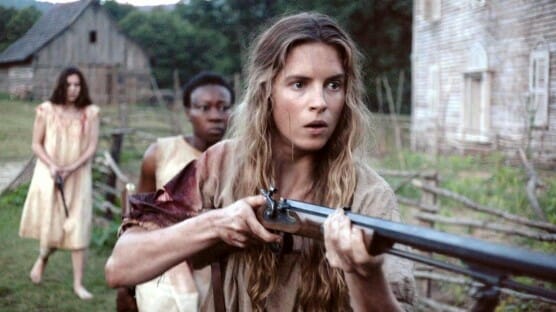The Keeping Room

If a viewer didn’t speak English, and simply gleaned the basic story of The Keeping Room through visuals and contextual clues, they might come away with the impression that it was a great film. And indeed, there’s a lot to like in this unusually conceived, female-fronted Civil War thriller, which just had its U.S. premiere in Atlanta after first premiering at TIF in 2014. It supplies us with intriguing characters, beautiful cinematography, genuine suspense and a smattering of powerfully acted moments. But where it misses, it falls into cliche or fails to imbue its characters with true humanity.
The Keeping Room is the intimate story of three women and two men—the women, Southern daughters, sisters and slaves, and the men a pair of marauding Union soldiers rampaging through Georgia in the days before Sherman’s conquest of Atlanta. At its heart, the strongest comparison is to call it something akin to a home invasion period piece, although the film is continuously reaching for something more poetic. That gravitas, however, is just barely outside its grasp, despite beautiful imagery and a near-perfect capturing of the stifling, war-torn American South, captured in high definition, bathed in reality and natural light.
Our protagonists are sisters Louise (Hailee Steinfeld of True Grit) and Augusta (the radiant Brit Marling), supported by family house slave Mad (Muna Otaru). Their brother and father having long since been disposed of in the war, they’re left to fend for themselves, hoeing turnips and stalking rabbits through the brush in dresses seemingly more suited to lounging on the veranda. Social order and hierarchy hangs by a thread, as the sisters maintain the barest semblance of pre-war life in appearances only. When Louise is bitten by a raccoon, and the wound immediately becomes infected, we see how much things have changed, as Mad refuses to take the blame and subsequent punishment slap to the face. After a long moment of weighing her options, a return slap to Brit Marling’s face makes a clear statement: Things are never going to be as they were before the war.
The Union soldiers (Sam Worthington and Kyle Soller), on the other hand, arrive on the scene like horsemen of the apocalypse—except, you know, on foot. Our introduction to them involves the murder of several seeming innocents without rhyme or reason, which pretty much sets the tone—they kill at will, and seem prone to sullen and aimless wandering, leaving a trail of bodies in their wake. All it takes is a glimpse of the beautiful Augusta as she seeks raccoon bite remedies to convince Worthington’s character to track her across country back to the family farm, with his inebriated lackey in tow. This sets the stage for the story’s meat, as the trio of women fight for their lives and defend the homestead.
In practice, it comes off as almost two films: A drama about the evils of wartime and breakdown of society and family in crisis, and a surprisingly standard (but effective) home invasion thriller. Marling is of course the thread that ties everything together, which is understandable—she’s the best actor on screen by a long shot, and one of the most effective, still underseen artists working in Hollywood today. Her capacity for projecting complex, warring emotions as she struggles to reassure her younger sister and tells a folksy, homegrown riff on Scheherazade’s One Thousand and One Nights is remarkable, and she quite nearly manages to give portions of the film the dignity that it so longs to have. Muna Otaru likewise provides a few valuable, if oversimplified, supporting scenes as Mad—enough to give her character a semblance of personality, rather than Steinfeld’s Louise, who is for the most part simply a damsel set-dressing. But make no mistake: This movie is all about Marling’s Augusta, who we should note is actually playing against type as an uneducated woman for once—unfortunately that can’t quite be used to handwave some of the character’s less intelligent actions once the violence starts.
-

-

-

-

-

-

-

-

-

-

-

-

-

-

-

-

-

-

-

-

-

-

-

-

-

-

-

-

-

-

-

-

-

-

-

-

-

-

-

-








































